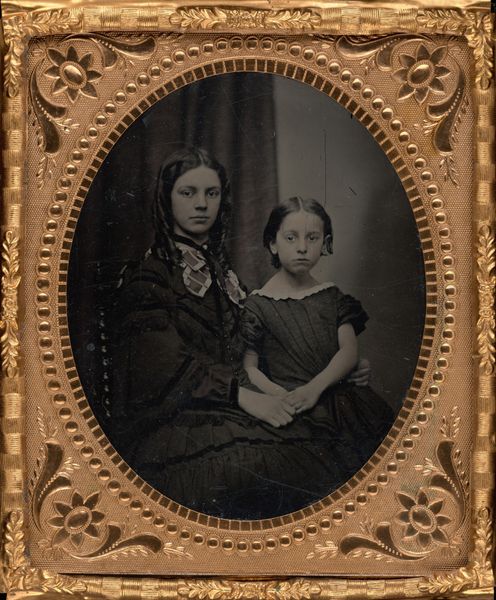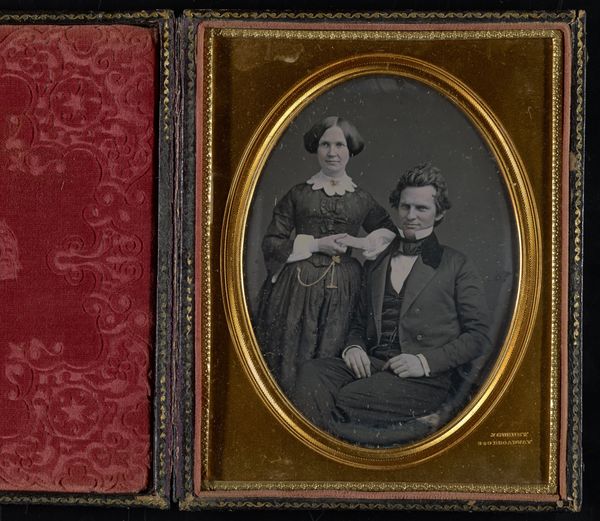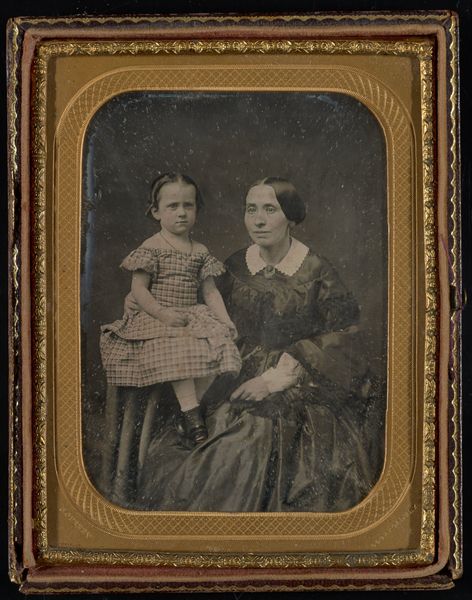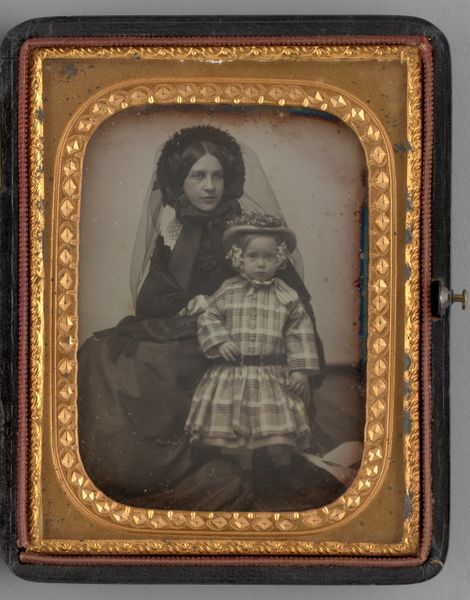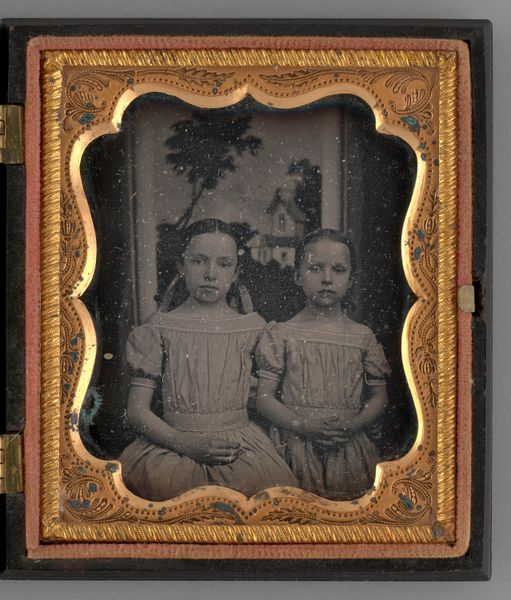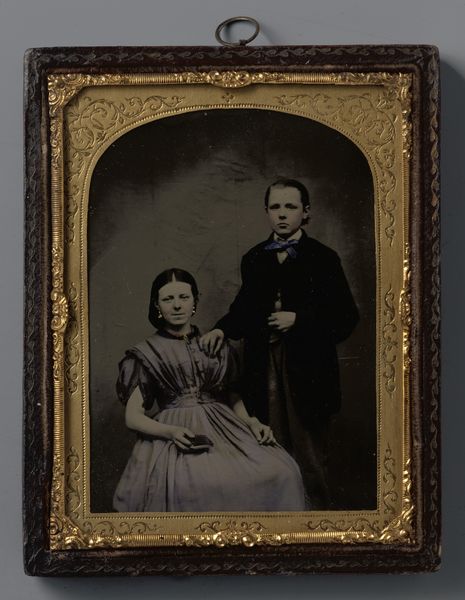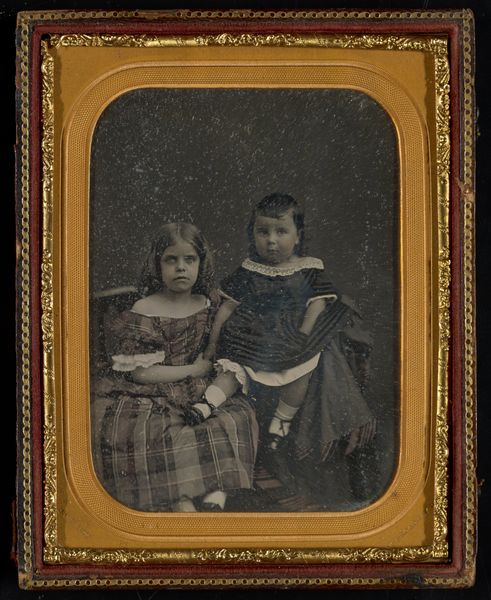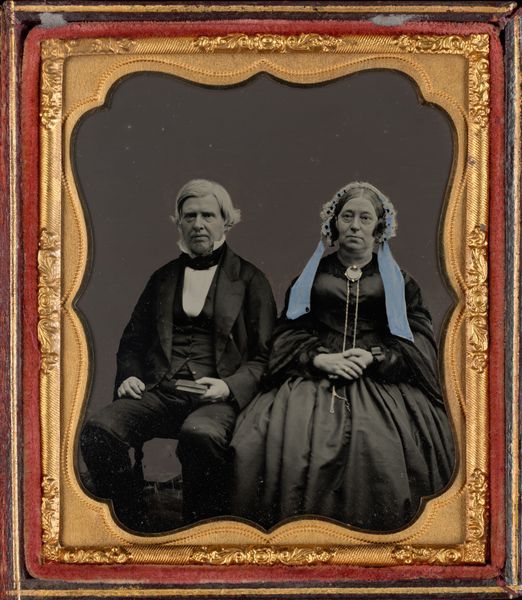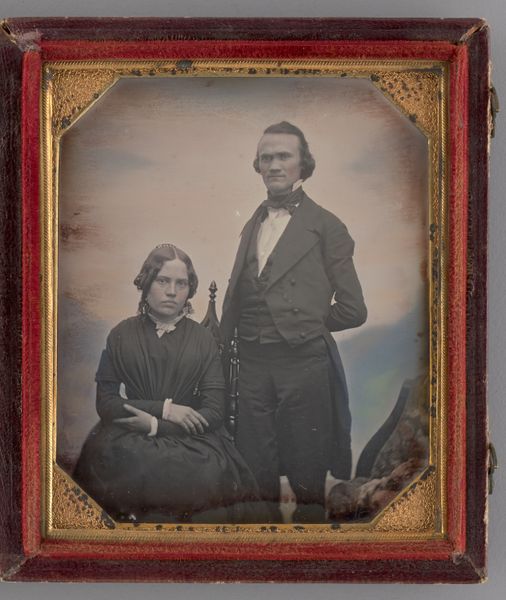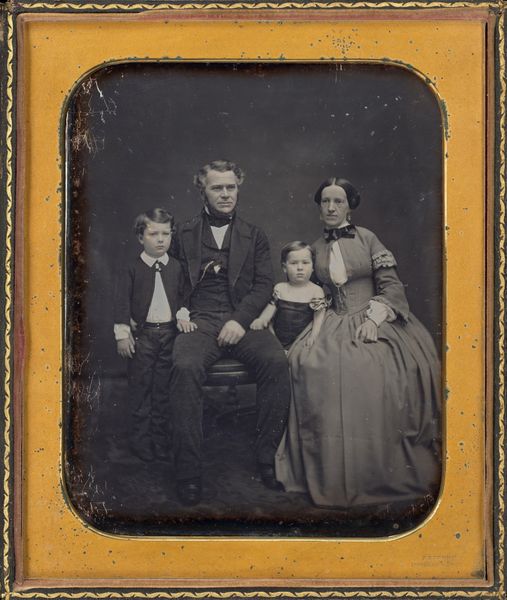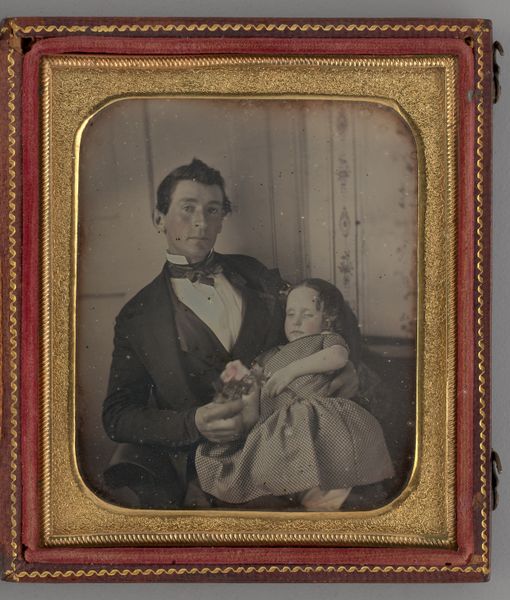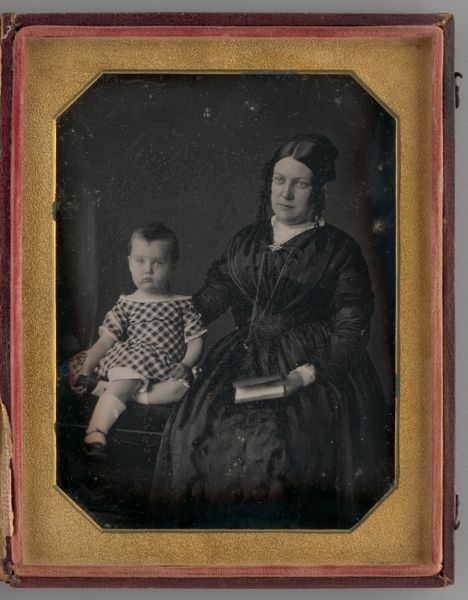
daguerreotype, photography
#
portrait
#
16_19th-century
#
daguerreotype
#
photography
#
child
#
coloured pencil
#
united-states
Dimensions: 8.1 × 6.8 cm (4 1/4 × 3 1/4 in., plate); 9.2 × 16 × 1 cm (open case); 9.2 × 8 × 1.5 cm (case)
Copyright: Public Domain
Curator: Here we have an anonymous daguerreotype from 1855, simply titled "Untitled (Portrait of a Woman and a Girl)," currently residing at the Art Institute of Chicago. Editor: What strikes me first is the severity of the image. The tonal range is incredibly tight; from deep blacks to stark whites with hardly any modulation in between. Curator: That restricted palette emphasizes the symbolic weight of the contrasting elements. The woman's dark attire, punctuated by the stark white bonnet and collar, immediately suggests a link to mourning or a strict religious order, framing her and, by extension, the child beside her, within a narrative of piety and adherence to tradition. The little girl is carrying a book, emphasizing her educational attainment and the transmission of knowledge across generations, furthering the symbolism. Editor: I see the same contrast, but read it more as an early photographer grappling with the limits of the daguerreotype process. Note the stiffness of their poses, perhaps unavoidable given the long exposure times of early photography. Look also at how that forces us to engage primarily with their faces. There's a psychological effect there – the artist directing our focus despite, or perhaps even through, technological limitations. Curator: It’s fascinating how different factors coalesce here. You’re right – the limitations absolutely shaped the final product and viewing experience. And still, their attempt to display them in the image within these established social roles hints at their complex place in 19th-century America, using an emerging technology to affirm established roles. It makes us ponder on both their humanity and the role society ascribed to them. Editor: I agree, the ambiguity is the strength here. Looking closely at the child, at her hands, her dress—these elements seem almost softened, suggesting an attempt, successful or not, to counter the sternness inherent to the photographic method. In a way, the artist invites us to deconstruct the symbolic. Curator: It feels like holding a whisper from a bygone era. These glimpses offer a fragment, encouraging us to consider the intricate threads of culture and perception woven into these captured moments. Editor: Yes, it's that friction, that constant push-and-pull between what the image is trying to convey and what its inherent qualities allow, that really makes it resonate.
Comments
No comments
Be the first to comment and join the conversation on the ultimate creative platform.
